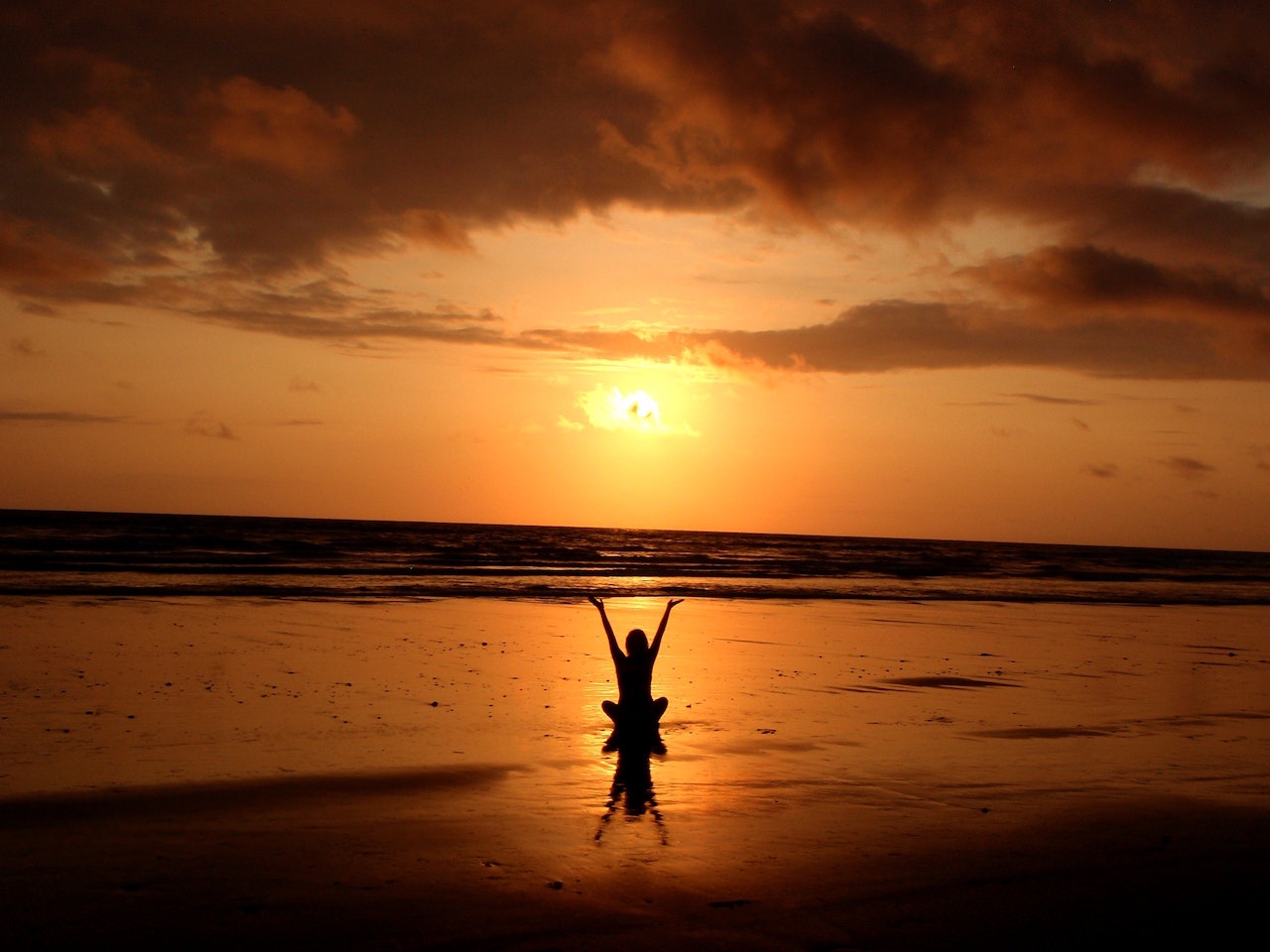5 Days to an Ayurvedic Lifestyle: Day 1
Published on September 6th, 2018
As I learn more about Ayurveda, the more it makes sense… one topic builds on the other until everything is just so logical and literally a “perfect science”. I am super excited to share this knowledge with you over the next 5 days! I’d like us to have a deep rooted understanding of Ayurveda so that we can apply its principles into our daily lives. Of course, I could give you “surface level” information – do these yoga poses every morning or don’t eat this with that but habits formed without understanding the “why” don’t last very long and my goal is for us to make life long habits to keep us in the best shape of our lives for as long as possible.
So back to the basics. What is Ayurveda? We say that it is the “science of life” but what exactly does that mean? Ayurveda aims to heal the mind, body, and soul through diet and lifestyle customized to each individual. The goal of Ayurvedic practice is to teach us to live with, rather than against nature as we are a microcosm of the macrocosm nature. When we begin to lead lives that don’t align with nature, our health suffers and disease occurs.
Each person has a unique blueprint with which they are born. This is called Prakriti. This blueprint is more than just your physical attributes, it is more like a genetic code for the mind, body, and intellect. Prakriti is composed of varying amounts of the 5 elements found in nature (Pancha Mahabhutas) – Water, Air, Earth, Space, and Fire. So for example, someone may predominantly have the elements of fire and water in them while others may have air and space. If we are able to maintain our natural state of elements, we remain balanced and in good health. But that isn’t the case for most people. When imbalance occurs in our true “nature”, a “Vikriti” or “distortion” develops. Ayurveda aims to correct the Vikriti to bring us back into balance.
Ayurveda provides a multi-treatment approach to treat and prevent disease. These treatments include breathing exercises, yoga, dietary changes, massage, herbs, detoxification among other modalities. Because Ayurveda believes that “opposites balance” and “like increases like”, therapy is geared towards decreasing what we have too much of and increasing what we have less of to create balance and maintain our Prakriti. It is important to understand the qualities of the 5 elements of nature in order to understand their effect on the body.

Water exists everywhere, from the oceans and rivers to the cells in our body. We learn in school that about 75% of our body is composed of water. Water is found in our tears, saliva, lymphatic fluid, sinus cavities, digestive juices, cerebrospinal fluid, and blood.

Air is constantly moving whether it’s in the summer breeze or the winter chill. Within the body, air is found in the movement of air in and out of our lungs through the nose and mouth. Air is also dispelled from the body with passing of gas, belching, and even cracking of the joints.

Earth is everything solid in the world, from the mountains and trees to the soil and rocks. Within the body -the bones, muscles, and fatty tissue are comprised of the earth element.

Space is pretty self-explanatory. Everything has some type of space in it and in the body, space is found in the cavities – the mouth, ear, nose, anus, etc. Space is usually filled with something so in the case of the body, space can be filled with food, mucus, or waste. The stomach space is filled with acid. The bones are porous and filled with cartilage.

Fire is found in nature wherever there is heat whether it’s a forest fire or the summer sun. In Ayurveda, we believe that the core of the human body is the stomach as most disease occur due to impaired digestion. Similarly, the earth’s core is also composed of fire. Our natural body temperature is over 98ᵒF so any heat in the body is coming from fire. The acid in the stomach is hot, so is urine and blood.
Each of us is composed of the above 5 elements in varying amounts. When the elements combine in varying amounts in an unnatural way, an imbalance is created. These imbalances are called the Doshas (translation: that which is at fault). There are 3 Doshas.
Vata (air and space) – “Va” in Sanskrit means “to move”. Vata is responsible for movement in the body – our respirations and how fast food moves through the gastrointestinal tract are just some of the functions of Vata. Air and space have qualities of lightness, coldness, dryness, roughness, and mobility. These translate into the body with cold hands/feet, dry skin, thin body frame, fast talking, etc.
Pitta (fire and water) – Pitta is derived from the Sanskrit word, “tapa” which means “heat”. Due to the fire and water elements in Pitta type individuals, the qualities present are hot, sharp, liquid, and spreading. These manifest in the body with a strong appetite, sharp facial features, sensitive inflamed skin, etc.
Kapha (earth and water) – “Ka” and “pha” in Sanskrit translate to flourishing water. Qualities of earth and water include heaviness, slowness, stickiness, denseness, oiliness, and softness. In the body, these qualities present with thick, oily skin, a calm mind, slow digestion, heavy body frame, etc.
Doshas aren’t necessarily a bad thing, we are each born with our own unique combination of the 3 Doshas. Some people are lucky enough to be born with equal amounts of all 3 Doshas and have great health and digestion. Most of us however, have one predominant Dosha which we need to keep balanced to maintain health.

To understand the beauty of Ayurveda, it is important for you to know your Dosha and its basics. What I ask you to do is take my Dosha Quiz (twice, if you have the time!), think back to when you were in elementary/middle school, before you hit puberty and answer the Quiz questions as that child (from the best you can remember). Then take the quiz as your current self after you’ve had external factors superimposed on yourself.
This will give you your Prakriti (natural Dosha) and your Vikriti (deviation, imbalanced Dosha). When we’re aiming for optimal health, we’re aiming for our original constitution or Prakriti. For many of us, our Vikriti is different from our Prakriti. Once we know our original balanced state and our current state, we can work on diet and lifestyle changes to get back to feeling great.
Click here to take the Dosha Quiz!
This information can be very confusing but once you begin connecting the dots and applying it into your own life, it gets much simpler!
Stay tuned for Day 2 🙂
Namaste

0 Comments